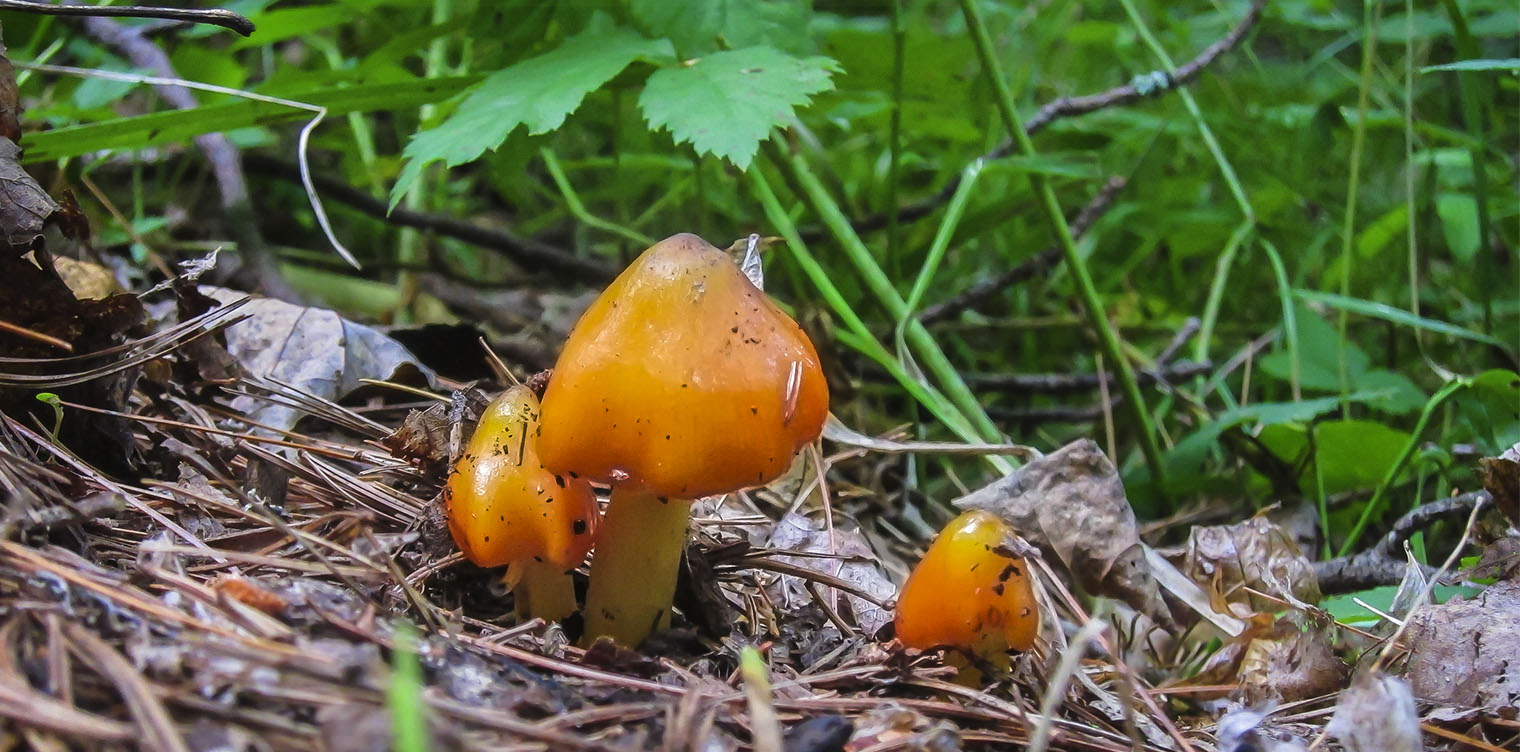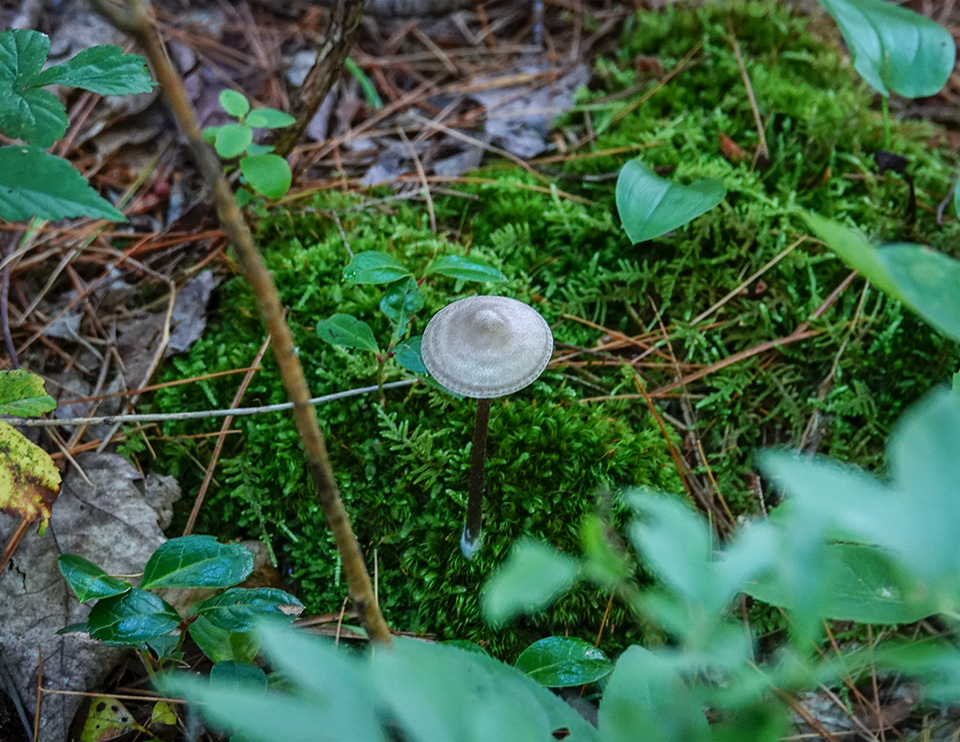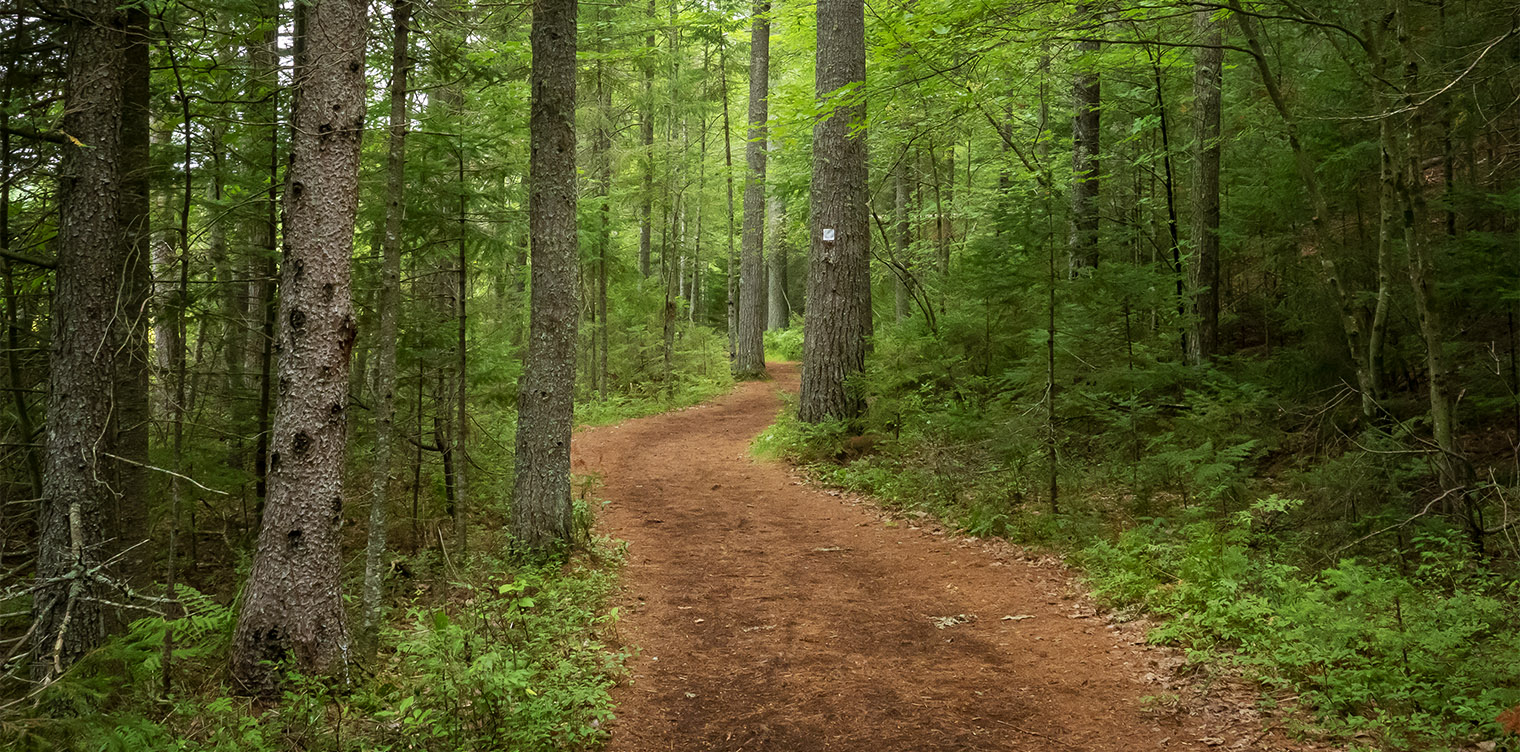Adirondack Fungi

Fungi are living organisms that are distantly related to plants and more closely related to animals; they are classified as a kingdom. This kingdom is not part of other life kingdoms, such as plants and animals.
The Adirondack Park is home to one of the most bountiful and beneficial fungi ecozones on the planet. Local mycologists have identified several thousand species in the northern Adirondacks alone.
Ecological Role of Fungi
Fungi differ from most plants because they lack chlorophyll and rely on organic material to survive. This group of organisms includes yeasts and molds, as well as multicellular fungi that produce fruiting forms known as mushrooms. There are an estimated 10,000 to 20,000 species of mushrooms worldwide, only a fraction of which have been identified.
- The mushrooms we see growing along woodland trails are the fruiting bodies of a fungus – the part of a fungus that typically appears above the ground. The purpose of a mushroom is to disperse spores.
- Underground, and out of sight, is the real fungus – a complex network of fungal threads called mycellium. Mycellium are so tiny that one cubic inch of soil can contain enough mycellium to stretch for eight miles.
Fungi are crucial to the ecosystem, because they serve as one of the principal decomposers. They break down organic material, including leaf litter and dead wood, that invertebrates find hard to digest. This decomposition process ensures that the ground is covered with soil in which plants can thrive. Fungi are crucial to the life cycles of many plant species on the planet, because plants rely on decomposers to provide them with nutrients they can take up through their roots. Over 90 percent of the world's plant species depend on fungi for their nutrition.
Categories of Fungi
Parasitic Fungi: These fungi survive by feeding on living organisms. This group includes some of the most dangerous plant pathogens, such as the Chestnut Blight Fungus (Cryphonectria parasitica), which entered the US on imported Japanese chestnut trees in the late 1800s and transformed the eastern landscape, virtually wiping out American Chestnut Trees. In the Appalachian Mountains, oaks replaced American Chestnuts as a canopy species, changing the forest to an oak-dominated forest in a very short time span.
Saprophytic Fungi: These are fungi which live off dead or decaying matter such as wood, humus, soil, grass, and dung. Some saprophytes will only grow on specific decaying matter. These fungi have enzymes that work to "rot" or "digest" the cellulose and lignin found in the organic matter, with the lignin being an important source of carbon for many organisms. Without their digestive activities, organic material would continue to accumulate until the forest became a huge rubbish dump of dead leaves and trees.
Some saprophytic fungi are wood-decay fungus – a variety of fungus that digests moist wood, causing it to rot. Some species attack dead wood, while others are parasitic and colonize living trees.
Mycorrhizal Fungi: Fungi in this group form symbiotic relationships with plants, in which the mycelium of the fungus (the vegetative part of the fungus) wraps itself around the tiny rootlets of trees and shrubs. Both the plant and the fungi benefit, with the plant obtaining nitrogen, phosphorus and other nutrients from the mushroom and the mushroom deriving moisture and carbohydrates from the tree. More than 80% of all plants have a mycorrhizal partner.
Finding Fungi: When

Mushroom fruiting patterns are influenced by precipitation, temperature, humidity, and daylight length. Fruiting patterns are usually seasonal. Some species have only one fruiting season; others have multiple fruiting seasons. Some mushrooms, such as morels, are found only in the spring, while others (such as boletes) are more abundant during summer and fall. Some mushrooms may over-winter. Some mushrooms fruit optimally during hot humid weather; others prefer cooler temperatures.
Fruiting patterns also vary with habitat. In northeastern hardwood forests, spring and early summer is the prime mushroom season. In mixed and conifer forests, such as those that dominate the Adirondack landscape, late summer and fall is the most prolific time for mushrooms.
In general, the best time to observe mushrooms is from two to five days after a significant rain. The network of mycellium below the ground responds to wet weather and appropriate temperatures by forming a minute fruiting body, referred to as the pin stage. These bodies then expand to become buttons, then expand rapidly by pulling in water from the underlying mycellium, forming a mushroom which can be observed on top of the substrate.
- During dry periods, sunny areas are not likely to yield large numbers of mushrooms; mushrooms will be more prevalent in wetlands and shady areas or on downed logs (because moisture is retained in the wood for longer periods).
- During rainy periods, exposed areas such as fields and lawns, are like to have as many mushrooms as more protected habitats.
Finding Fungi: Where

The best places to observe mushrooms, like the best places to observe plants and animals, depend on habitat. Many mushrooms require specific substrates (the material on which the organism grows). Some exist in mycorrhizal relationships with specific trees or other plants. For that reason, the first step in identifying a mushroom is to observe the habitat, the specific plants growing nearby, and the substrate. Observe, for instance, whether the mushroom is growing on the ground or on wood.
Some trails feature more mushrooms than others. For instance, the Heron Marsh Trail at the Paul Smith's College VIC is particularly rich in mushrooms, as is the Loop Trail at Henry's Woods. Observe and study, but do not pick. Mushroom collection is not advised in either place, since both trails are on private property. Collection of natural material of any kind is specifically prohibited at both the places.
Both the Paul Smith's College VIC and the Adirondack Interpretive Center usually offer guided mushroom walks during the summer and early fall. At the VIC, the mushroom forays are led by mushroom expert Susan Hopkins and usually feature an introductory session on the life cycles of fungi, followed by a walk on the Heron Marsh Trail to identify and study the fungi found at trailside. The VIC also hosts a biennial Adirondack Fungi Festival, with workshops, cooking demonstrations, and mushroom forays led by experts.
References
Gary H. Lincoff. National Audubon Society Field Guide to North American Mushrooms (Alfred A. Knopf, 1981).
George L. Barron. Mushrooms of Northeast North America: Midwest to New England (Lone Pine Publishing, 1999).
Alan E. Bessette, Arleen R. Bessette, David W. Fischer. Mushrooms of Northeastern North America (Syracuse University Press, 1997).
Alan Bessette. Mushrooms of the Adirondacks: A Field Guide (North Country Books, 1988).
E. Barrie Kavasch. Guide to Eastern Mushrooms (Big Country Books, 1982).
Roger Phillips. Mushrooms and Other Fungi of North America (Firefly Books, 2010).
Peter Roberts and Shelley Evans. The Book of Fungi: A Life-size Guide to Six Hundred Species from Around the World (The University of Chicago Press, 2011).
